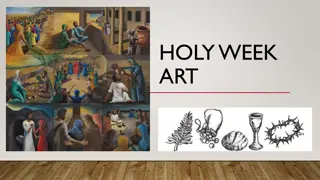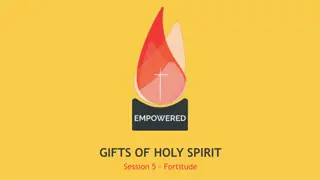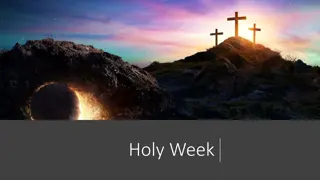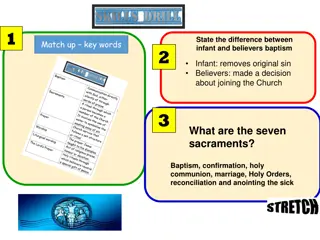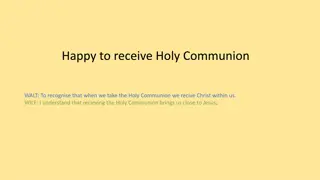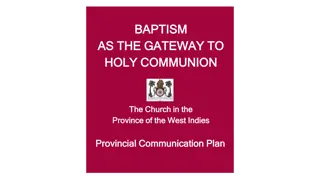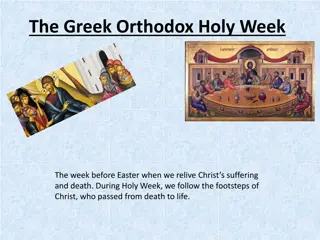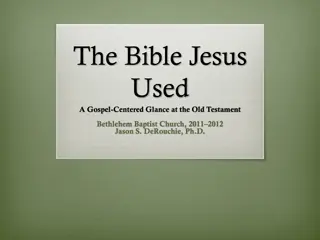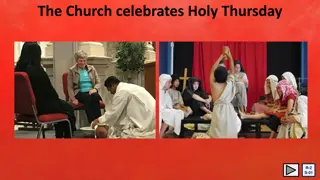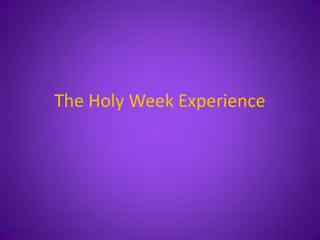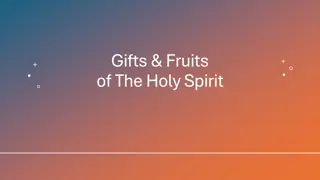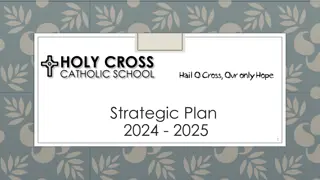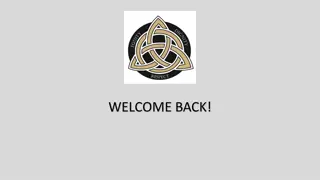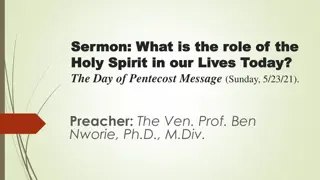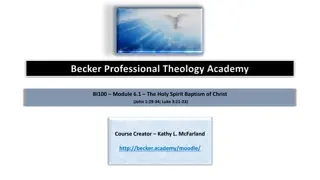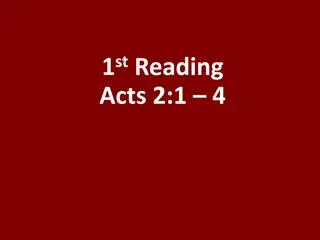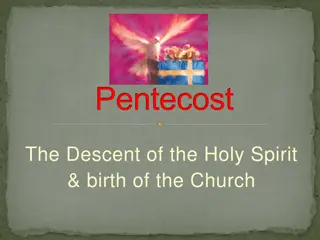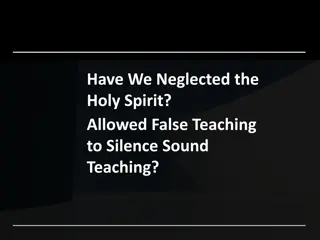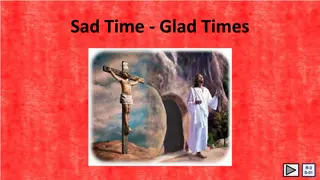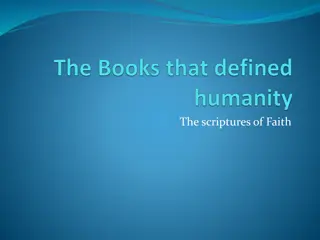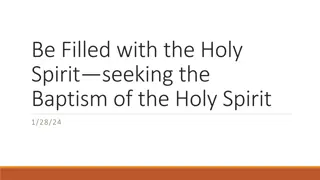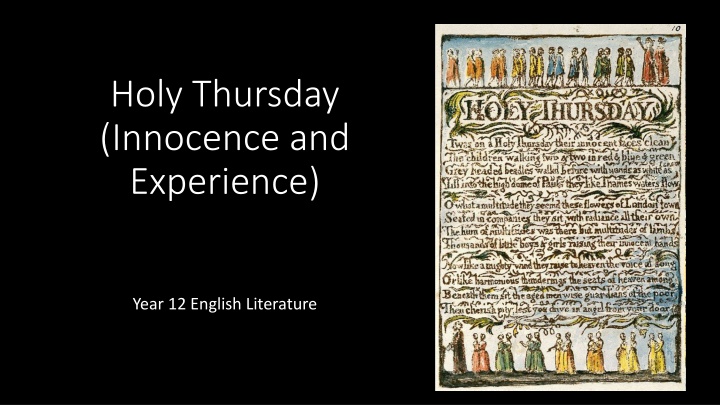
Exploring Holy Thursday in Innocence and Experience
Dive into William Blake's depiction of Holy Thursday in Innocence and Experience, examining the themes, imagery, and societal critiques presented in the poems.
Uploaded on | 1 Views
Download Presentation

Please find below an Image/Link to download the presentation.
The content on the website is provided AS IS for your information and personal use only. It may not be sold, licensed, or shared on other websites without obtaining consent from the author. If you encounter any issues during the download, it is possible that the publisher has removed the file from their server.
You are allowed to download the files provided on this website for personal or commercial use, subject to the condition that they are used lawfully. All files are the property of their respective owners.
The content on the website is provided AS IS for your information and personal use only. It may not be sold, licensed, or shared on other websites without obtaining consent from the author.
E N D
Presentation Transcript
Holy Thursday (Innocence and Experience) Year 12 English Literature
Context Children of the poor should not be educated in such manner as to set them above the occupations of humble life, or so as to make them uncomfortable among their equals . Reference: Sarah Trimmer, Reflections upon the Education of Children in Charity Schools; with the Outlines of a Plan of Appropriate Instruction for the Children of the Poor (London: T. Longman and J. and F. Rivington, 1792), p. 8 http://www.fitzmuseum.cam.ac.uk/gallery/samplers/charity/
Holy Thursday (Songs of Innocence) Blake is referring here to the Charity Schools annual service at St Paul s Cathedral (started in 1782) on Ascension Day (1stMay), when up to 6000 children would make their way in procession through the streets t to St Paul s cathedral. Here the children give thanks to their wealthy benefactors . This poem is written in rhyming couplets and in much longer lines that the counterpart poem in Experience. This increased line length captures the sense of a procession of children. Blake counsels the reader to be full of compassion for the poor lest you drive an angel from your door. So to live your life with pity and compassion will bring you closer to God.
Holy Thursday (Innocence) As a group: Images and symbols (eg the wands as white as snow ) Colours (e.g. the contrasting colours and what they might suggest) Viewpoint (e.g. is it clear who is speaking, and from what viewpoint? Does it link to the viewpoint in other poems.) The setting of the poem a sense of place The use of verse for (for example, end stopped lines or enjambment and what effect this has, the use of the three stanzas and so on) The reference to past, present, future and what effect this has The kinds of sentences (questions, statements, commands, exclamations and their effect
Holy Thursday (Songs of Experience) Holy Thursday in Songs of Innocence is a satire on the annual parade of charity children to St. Paul s. In this poem Blake makes a more direct and powerful attack on the shameful presence of so much poverty in a rich and fruitful land . The spiritual state of such a country is eternal winter contrasted with the sunshine enjoyed by more fair and just societies. The illustration shows a mother standing beneath a leafless tree growing as she gazes down on the lifeless body of her infant. In the right hand margin are other scenes of poverty and death. A mother and siblings crying over the death of a child in the bottom corner of the illustration/
Structure and rhetoric The four quatrains, with alternate rhymes, display a technique in which there are unanswered and answered questions. The shorter lines create an accusatory tone and show Blake s sense of moral outrage. Rhetorical questions are directed at the reader, questions that are then answered, this technique is called hypophora. The use of synecdoche the hand that feeds them represents cruel and faceless authority. There is no sense of personal relationship with the children. All they get is the unwilling hand of charity. Anaphora is the repetition of a phrase to add strength to the final climatic statement (see the third verse) Discussion: Here charity is not an altruistic act of pity, but something else. What is the reality of charity presented in this poem?
Group analysis Group analysis As a group: Metaphors and symbols - and their sun does never shine Viewpoint (e.g. is it clear who is speaking, and from what viewpoint? Does it link to the viewpoint in other poems.) The setting of the poem a sense of place The structure The presentation of authority figures and the powerless children The political and social issues explored in the poem Colour and contrasts
FURTHER ANALYSIS FURTHER ANALYSIS In Blake s view here can be nothing holy about a service which shows us how many thousands of children are reduced to misery in England. The poem challenges the very image of Britain as a rich and civilized nation. In the 1790s Britain was the world s wealthiest superpower, so the statement that it was a land of poverty was radical. The only way to explain such poverty would be to assume at everyone was poor. This of course was not the case. Blake also attacks the whole system of caring for poor children as cold and usurous (usury is the practice of lending money for profit, by charging interest on it and therefore getting back more than you lent). This may sound a harsh description, but we need to remember that the charity schools of the eighteenth century were aimed at turning out child workers for the most brutal industries. This brought profit to their employers but drove thousands of children into an early grave.
Holy Thursday Work in pairs Complete a compare and contrast activity with Holy Thursday and the counterpart poem in Innocence.
Written response activity Written response activity Write a 500 word analysis of one of the poems we have studied so far. Pick a poem you have not already written about. Blake directly criticises the way adults abuse children. To what extent do you agree with this view?

